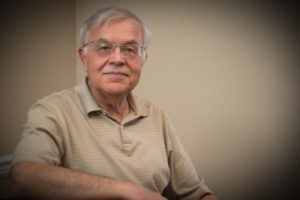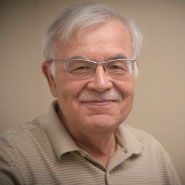
From pizza and steak to homemade brownies, Jerry Grebb has an appetite for the good things in life.
But when eating led to unexplained abdominal pain, Grebb got a taste of something different – Kittitas Valley Healthcare.
A Washington State University grad who grew up in Quincy, Grebb, a CPA, fell in love with Ellensburg when he moved here 40 years ago. When his now 38-year-old daughter was born, Grebb also fell in love with KVH Hospital. This past September reminded him why.
For months, Grebb had experienced periodic pain after eating. The week before Labor Day he saw an internal medicine specialist who, suspecting gallstones, scheduled an ultrasound for the following Tuesday. But the Sunday before Labor Day, Grebb landed in the emergency room at KVH Hospital where a CT scan revealed a hiatal hernia.
The bottom of Grebb’s stomach, including the duodenum and beginning of his small intestines, had worked its way into the opening where the esophagus passes through the diaphragm to the stomach. “The opening was stretched or torn,” he says. “Two thirds of my stomach was up in the hernia above my diaphragm.” It was pressing on his heart and lungs and keeping him from normal eating.
Dr. Timothy O’Brien of KVH General Surgery arrived within minutes, ordered Grebb’s stomach evacuated and told Grebb he’d need surgery. But first Grebb would be hospitalized for treatment of a pancreatic inflammation. “I liked Dr. O’Brien’s style,” Grebb says. “He was very matter-of-fact. He’s a very bright man and so plain spoken. He doesn’t try to dazzle you.”
Two days later when Grebb had the previously scheduled ultrasound O’Brien was on hand. So was Dr. Ken Harris, a trusted friend of Grebb’s who runs a private practice out of the KVH General Surgery clinic. So was the newest partner in the KVH General Surgery clinic Dr. Tom Penoyar who is trained in laparoscopic surgery for hiatal hernias, a cutting edge procedure that is less invasive than conventional surgery and results in shorter hospital stays and quicker recovery. “With laparoscopic, it’s one day in the hospital. With conventional, it’s five,” Grebb says.
On Thursday, with Harris assisting, Penoyar operated on Grebb. Working through five small abdominal incisions, Penoyar pulled Grebb’s stomach down from his chest and into proper position and narrowed the hernia by sewing its two edges together. He then wrapped the upper part of Grebb’s stomach around and behind Grebb’s esophagus, sewing the stomach to itself to create a “collar” that will keep it from sliding up into Grebb’s chest.
Called the Nissen technique, Penoyar performed the procedure an estimated 30 times while training in the Boston area. That may not sound like a lot, he says, but the nationwide average during training is six.
On Friday, Grebb went home. On Saturday, he walked downtown. On Monday, he went to work. Not long after, he was eating pizza without problems and calling his experience a perfect collaboration between the old and new guard at KVH.
“Dr. Penoyar has done more hiatal surgeries than Dr. Harris because of where he trained, at a big hospital in Massachusetts,” Grebb says. “It was wonderful that he was able to perform the procedure here. And I was so impressed by the sageness of Dr. O’Brien and Dr. Harris.
“That’s what the punch line is here,” Grebb says. “We’ve got both – the sage older team and the new surgeon trained with the latest technology. I couldn’t have asked for a better outcome.”
